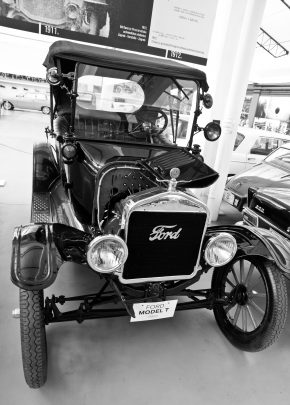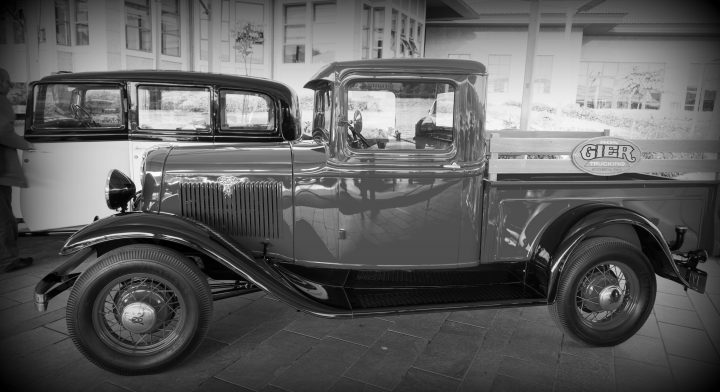A look back at the history of Ford Australia

On October 7, 2016 the last Australian-built Ford was rolled off the production line, and when it did it brought to an end almost 100 years of history in car manufacturing in Australia for the country.
For this week’s Saturday Night Nostalgia, Starts at 60 thought it would take a look back on the history of Ford in Australia, paying tribute to those men and women who contributed to the iconic cars and history.
Ford kicked off in the United States with the Model A in 1903 and it wasn’t long for the cars to find a market in Australia.
It followed up the Model A with the Model T five years later, and Tarrant Motor and Engineering C in Melbourne became the first agent to sell the Ford brand in Australia.

A Model T was used for a journey from Longreach to Darwin in 1919, after the Commonwealth in August 1917 banned the importation of ‘luxury items’ including car bodies which meant that Ford had to start building its cars in Australia.
So in March 1925, the Ford Motor Company of Australia was launched in Geelong, Victoria and by the end of that year more than 800 workers were employed by the company.
Additional plants were opened in Adelaide, Brisbane and Sydney (1926), and Fremantle, Western Australia (1930).
In February 1934 Australia’s first Ford ute, the Model 40, was designed by a 22-year-old South Australian born designer by the name of Lew Brandt.
It was the first in a number of V8s released by Ford in the 1930s.

Robert Menzies instructed that Ford’s production facilities were to be converted for the war effort in 1939, but by 1941 the manufacturing sector had overtaken the rural sector making up to 25 per cent of the employment figures.
The battle between Holden and Ford kicked off in the late-1940s when the first Holden was launched in Adelaide.

With that, Ford decided to adapt the US-designed Falcon for the Australian market and in 1960 — following a multi-million dollar expansion and the opening of the Broadmeadows Car Assembly Plant — the first Falcon was produced in Australia.
It was the beginning of a new era for Ford.
https://www.instagram.com/p/zB5zFir6Nm/
In 1966 the XR Falcon had been named Wheels Car of the Year.
In October 1970, Ford’s highly regarded XY Falcon was released. Its GTHO Phase 3 muscle car was considered to be the world’s fastest four-door production car of the time, with Allan Moffat winning his second consecutive Bathurst 500 in one.
https://www.instagram.com/p/0bKMSVL6ME/
The first Ford Falcon to be designed and built in Australia was the Ford XA.
With increasing success on the race track, Ford’s popularity in the country grew and following Moffat’s Mount Panorama win in October 1977 in a XC Falcon a limited edition Ford Cobra was released.
https://www.instagram.com/p/1RaHpzr6Co/
An XE Falcon was released in 1982 and it became Australia’s best-selling car with more than 84,000 units sold.
At the start of the ’90s, Ford was the top-selling vehicle in Australia, number one in both passenger car sales and number two overall.
However, in 1994 the last-remaining car manufacturing plant in New South Wales — Ford’s Homebush factory — was closed. It saw the end of production for the Ford Capri and five years later the release of the terribly unpopular AU Falcon.
The Brisbane plant closed in 1999.
In July 2007, Ford announced that it would close its Geelong engine plant in 2010 and in May 2013 the company announced it would close its manufacturing plants in October 2016, with approximately 1,200 workers set to lose their jobs.
Despite Government support (a $16 million funding boost for sacked Ford workers) it could not reinvigorate the car manufacturing industry in Australia.
Ford revealed the extent of its losses in 2014, which is hardly surprising given there are more than 55 makes of car available on the Australian market for consumers to buy, most manufactured and imported from other countries.
The last vehicle, a blue XR6 Ford Falcon, rolled off the Broadmeadows production line at a private event on October 7.
Looking back, Australia established a powerful car history, capable of designing, engineering and manufacturing its vehicles, but the days of Australian car brands such as Leyland, Valiant, Holden and Ford are no more.








 Proudly Australian owned and operated
Proudly Australian owned and operated